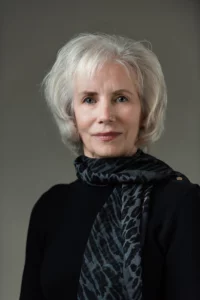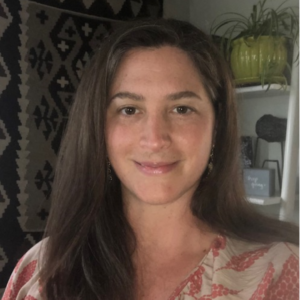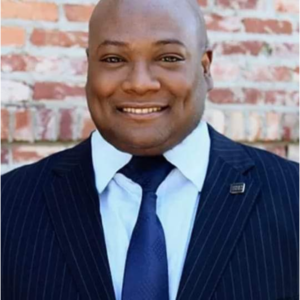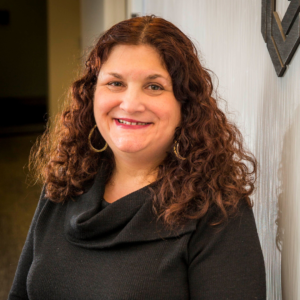March comes roaring in with a month-long recognition of the remarkable women who have influenced the development of America and ends with a national day dedicated to the modest folk hero who brought dignity and fairness to farm workers. Scattered throughout the month are religious observations such as Ramadan, the most solemn of Muslim holidays; Purim, the Jewish holiday following The Fast of Esther; and Holi, also a joyous festival featuring family and friends, food, and fun!
March is National Women’s History Month and comes with its own long history. It took 76 years from the establishment of International Women’s Day on March 8, 1911, to the 1987 Congressional declaration of March as Women’s History Month. Now an annual national observance, March is an opportunity for all Americans to learn more about how women have shaped the country—from leading voting rights movements, to winning many Nobel Prizes for scientific and medical breakthroughs, to contributing to American culture and society.
This year’s theme, “Celebrating Women Who Tell Our Stories,” recognizes women as the keepers of history, tradition, and family lore, preserving history while also promoting our understanding of, and connection to, others. Through the Smithsonian’s “Because of HER Story,” you can explore the role of women in activism, health, science, and innovation here. With a separate theme to embrace equity, explore 21 Ways to Celebrate International Women’s Day on March 8 here.
Purim, one of the most joyous and festive holidays in Judaism, begins this year on March 7. The holiday marks the incredible 5th century BC defeat of Persian rulers who had secretly plotted to kill all the Jews in the empire. Queen Esther—wife of the Persian Emperor and, unbeknownst to all, a Jew herself—found out about the plan and informed her husband of the treachery, and of her true ancestry. The king forgave Esther and gave the Jews permission to defend themselves, turning the tables on their enemies. Today, many observant Jews acknowledge the holiday by reading the “scroll” (i.e., the Book of Esther) at their synagogue.
On a more secular note, the story of Purim today is also celebrated through skits, sometimes with humorous or pop culture themes, costume parties and masks, carnivals, and parades. Sharing and caring for others are also central to the holiday, with baskets of food and drink exchanged among friends and neighbors, and gifts of food or money made to the poor so they may celebrate, as well.
For information about the meaning of Purim, how it is celebrated today, and more, click here.
Holi, or the Festival of Colors, is celebrated on March 8, marking the arrival of a blossoming spring and the end of winter. Celebrated by all religions across India and Southeast Asia, Holi festivals also take place in the United States, the UK, Canada, Australia, and other countries with large Indian communities. Besides the beginning of spring, Holi also symbolizes the joys of love, the victory of good over evil, and starting anew.
On Holi, vibrant colored powders and waters take center stage. On the morning of the festival, some participants place a touch of color on their forehead, while others smear their entire body with a rainbow of hues, each color with a different meaning. A bucket of colored water is used to douse family, friends, or even strangers passing by. That’s in addition to the water pistols and water balloons children prepare early in the day. After several hours of drinks, snacks, and dancing, revelers bathe and change into clean, neatly ironed clothes for lunch, signifying the end of exuberant Holi activities.
To learn 5 things about Holi, click here.
This year, Ramadan runs from sundown, March 22, through April 21. Considered one of the most sacred times on the Muslim calendar, Ramadan is observed by daily fasting from sunrise to sunset, with exceptions for children and people who are elderly, pregnant, or ill. Muslims believe that fasting—one of the Five Pillars of Islam—makes them more sensitive to the suffering of the poor and cleanses their soul so that Allah may forgive them. Beyond participating in the usual five daily prayers, many Muslims may also visit their mosque for several hours of additional worship during the month-long event.
What foods are eaten and when varies by culture. For example, having a pre-dawn meal is common, and once sundown arrives, the day-long fast is broken by eating something light, such as the traditional dates. Family and friends usually share a larger meal once evening prayers are done, and some then gather for communal prayer. In some locales, a vibrant culinary nightlife has emerged where restaurants and cafes stay open all night for eating and socializing.
To learn more about this holy month, click here. For information about Ramadan fasting and the role of different foods and drinks, visit here.
In 2014, President Barack Obama proclaimed March 31 as Cesar Chavez Day, a federal commemorative holiday. Chavez’s father, a small farmer, was swindled out of receiving the deed to land he cleared. Cesar himself experienced injustice and racism while in school. Both experiences fueled Chavez’s lifelong advocacy for the dignity and fair treatment of farm workers who often labored under life- and health-threatening conditions. To push for change, Chavez and Dolores Huerta, a powerful American labor leader and civil rights activist, joined forces and founded the National Farm Workers Association (NFW) union in 1962 which later became the United Farm Workers (UFW). Inspired by the non-violent approaches of Gandhi, Dr. Martin Luther King, Jr., and his own strong Catholic faith, Chavez’s hunger strikes, picketing, boycotts, and other protests were nonetheless, often met with violence.
During his career, Chavez gained formal protections for farmworkers including eliminating the use of the dangerous pesticide DDT, prohibiting the spraying of pesticides while workers are in the fields, and requiring protective clothing against other pesticides, fair wages, and humane housing. By 1970, California grape growers accepted union contracts. As an activist for voting, environmental and consumer rights, Chavez was awarded the Presidential Medal of Honor posthumously for work that led to making life better for today’s 2.5 million farmworkers.
To learn about Chavez and the farmworkers’ movement, check out his foundation or read about his remarkable life and legacy from the UFW here.


 Dr. Cheryl-Lynne McCalla, DO
Dr. Cheryl-Lynne McCalla, DO Kathleen Ramkaran, RN, CCM
Kathleen Ramkaran, RN, CCM Hali Gantumur
Hali Gantumur Yasmin
Yasmin  Jennifer Olsen GNP-BC
Jennifer Olsen GNP-BC Meena Raj, MD,
Meena Raj, MD, 

 Kimberly Grove
Kimberly Grove
 Pat Bishop
Pat Bishop Elizabeth Ariemma
Elizabeth Ariemma Ray Jay Garcia, M.D.
Ray Jay Garcia, M.D.
 Heidi Young
Heidi Young Matt Kestenbaum
Matt Kestenbaum
 Anne Silao-Solomon, M.D.
Anne Silao-Solomon, M.D. Matthew Irwin, M.D., M.S.W.
Matthew Irwin, M.D., M.S.W. Catherine McGrady, RN, MSN, is Vice President, Clinical Programs at Capital Caring Health. In this role she is responsible for the development, implementation, and monitoring of clinical programs in support of high-quality patient-centered care delivery across the continuum of services. Catherine also manages external partnerships including Capital Caring Health’s participation in ACOs and other value-based clinical programs
Catherine McGrady, RN, MSN, is Vice President, Clinical Programs at Capital Caring Health. In this role she is responsible for the development, implementation, and monitoring of clinical programs in support of high-quality patient-centered care delivery across the continuum of services. Catherine also manages external partnerships including Capital Caring Health’s participation in ACOs and other value-based clinical programs Jason Sobel, MD
Jason Sobel, MD Kremena Bikov
Kremena Bikov Stacy Brown
Stacy Brown Jackie Gouline
Jackie Gouline Susan Roberts
Susan Roberts Brenan Nierman
Brenan Nierman Annette Lindsay
Annette Lindsay Shannon Collier
Shannon Collier Carla Thompson
Carla Thompson Gabby True
Gabby True Evan Kirschner
Evan Kirschner Margaret Doherty
Margaret Doherty Henry Fuller
Henry Fuller Jennifer Godwin
Jennifer Godwin Sally Hughes
Sally Hughes LaWanda Middleton
LaWanda Middleton Hope Collazo
Hope Collazo Odessa Simpson
Odessa Simpson Anne Young
Anne Young Sherri Parker
Sherri Parker Catherine Kravolec
Catherine Kravolec Heidi Young, M.D.
Heidi Young, M.D.
 Hank Willner, M.D.
Hank Willner, M.D. Audrey Easaw
Audrey Easaw Julia Feldman
Julia Feldman Gus has been a part of the Capital Caring Health family for nearly fifteen years. Ten of those years have been in leadership, working with colleagues and co-workers to achieve the best in their ability while promoting CCH core values. Gus has a background in nursing and a lifelong passion for technology. In each position at CCH, Gus has found ways to integrate technology to enhance outcomes and job satisfaction.
Gus has been a part of the Capital Caring Health family for nearly fifteen years. Ten of those years have been in leadership, working with colleagues and co-workers to achieve the best in their ability while promoting CCH core values. Gus has a background in nursing and a lifelong passion for technology. In each position at CCH, Gus has found ways to integrate technology to enhance outcomes and job satisfaction.
 Linda Biedrzycki
Linda Biedrzycki Joe Murray
Joe Murray Lin Maurano
Lin Maurano Laura Branker
Laura Branker Cameron Muir, M.D.
Cameron Muir, M.D. Cameron Muir, M.D.
Cameron Muir, M.D. Fellowship
Fellowship Lee-Anne West, M.D.
Lee-Anne West, M.D.
 Steve Cone
Steve Cone

 Kieran Shah
Kieran Shah Altonia Garrett
Altonia Garrett Jason Parsons
Jason Parsons Nancy Cook
Nancy Cook Michael Byas-Smith, M.D.
Michael Byas-Smith, M.D. Olubukola Bolaji, M.D.
Olubukola Bolaji, M.D. Jennifer Gerhard, D.O.
Jennifer Gerhard, D.O. Hershell Foster
Hershell Foster Michael Toohig’s Story
Michael Toohig’s Story Liberating Europe
Liberating Europe Marrygold Ugorji’s Story
Marrygold Ugorji’s Story Sherri Parker, Team Leader Medical Social Worker
Sherri Parker, Team Leader Medical Social Worker Colleen Carberry, RN Case Manager
Colleen Carberry, RN Case Manager Paulette Davidson, Chaplain
Paulette Davidson, Chaplain Donna Smith
Donna Smith Tabitha Gingerich, NP
Tabitha Gingerich, NP Dwayne Barton, NP
Dwayne Barton, NP Caitlin Geary
Caitlin Geary Sayaka Hanada
Sayaka Hanada Sherri Parker
Sherri Parker
 Mandy Brouillard
Mandy Brouillard Tamara Barnes, M.D.
Tamara Barnes, M.D. Alan Goldblatt, M.D.
Alan Goldblatt, M.D. Amanda Keerbs, M.D.
Amanda Keerbs, M.D. Adam Knudson, M.D.
Adam Knudson, M.D. Peyman Mamdouhi, D.O.
Peyman Mamdouhi, D.O. John McCue, D.O.
John McCue, D.O. Christopher Pile, M.D.
Christopher Pile, M.D. Maleeha Ruhi, M.D.
Maleeha Ruhi, M.D. Mohammad Saleem, M.D.
Mohammad Saleem, M.D. Jason Sobel, M.D.
Jason Sobel, M.D. Carolyn Richar
Carolyn Richar Susan Boris
Susan Boris Keith Everett
Keith Everett Vivian Hsia-Davis
Vivian Hsia-Davis David Schwind
David Schwind Eric De Jonge, M.D.
Eric De Jonge, M.D. Melissa McClean, N.P.
Melissa McClean, N.P. Shaz Anwar, D.O.
Shaz Anwar, D.O. Petros
Petros  Neil Parker’s Story
Neil Parker’s Story Sulaiman Bangura’s Story
Sulaiman Bangura’s Story Steven Skobel’s Story
Steven Skobel’s Story